B-21 Raider Could Use Collaborative Drones Meant For Fighters
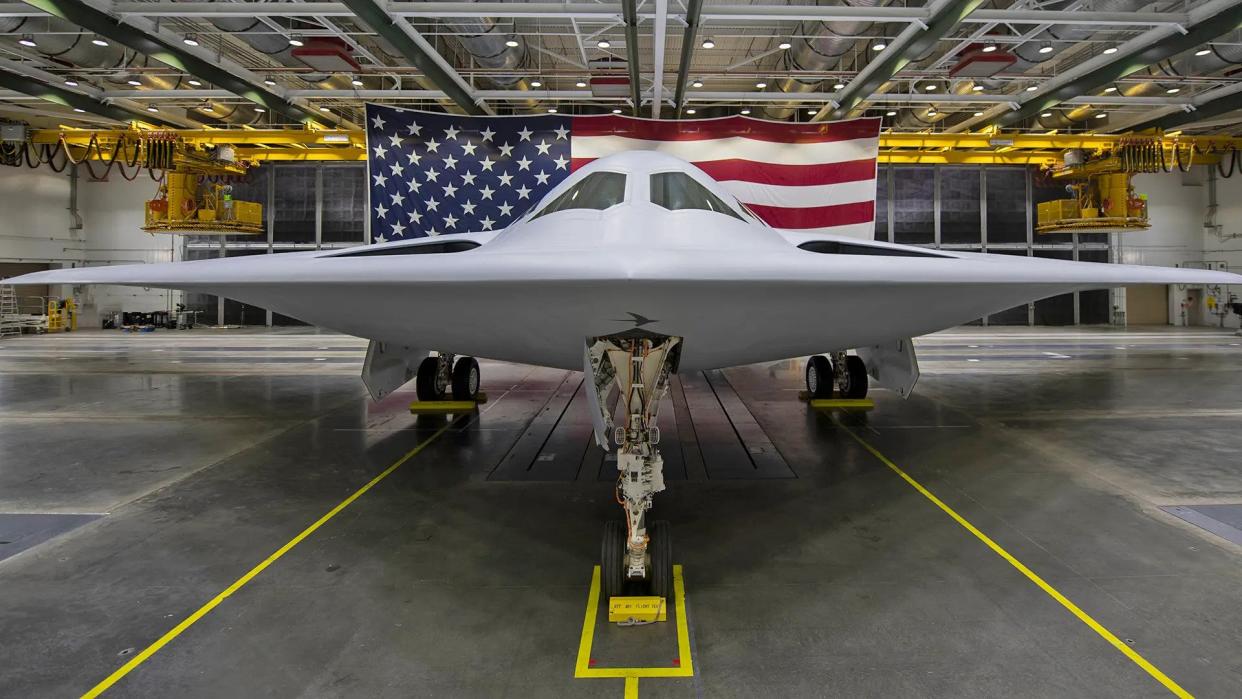
A senior U.S. Air Force official has said not to rule out the possibility that its future Collaborative Combat Aircraft drones, or CCAs, could work closely together with the service's forthcoming fleet of B-21 Raider stealth bombers. CCAs could operate alongside aerial refueling tankers and cargo aircraft, possibly even carrying out those mission sets to a degree directly, as well. This would all be in addition to assisting crewed tactical jets in various ways — the primary stated mission set for these drones now — or conducting missions on their own.
Air Force Lt. Gen. James Slife, the service's Deputy Chief of Staff for Operations, talked about roles and missions for the service's future CCAs, along with how units operating those drones might be organized, earlier today. Slife, who is also now the nominee to become the Air Force's next Vice Chief of Staff, offered these details while speaking alongside Air Combat Command head Gen. Mark Kelly at an annual conference hosted by Defense News.
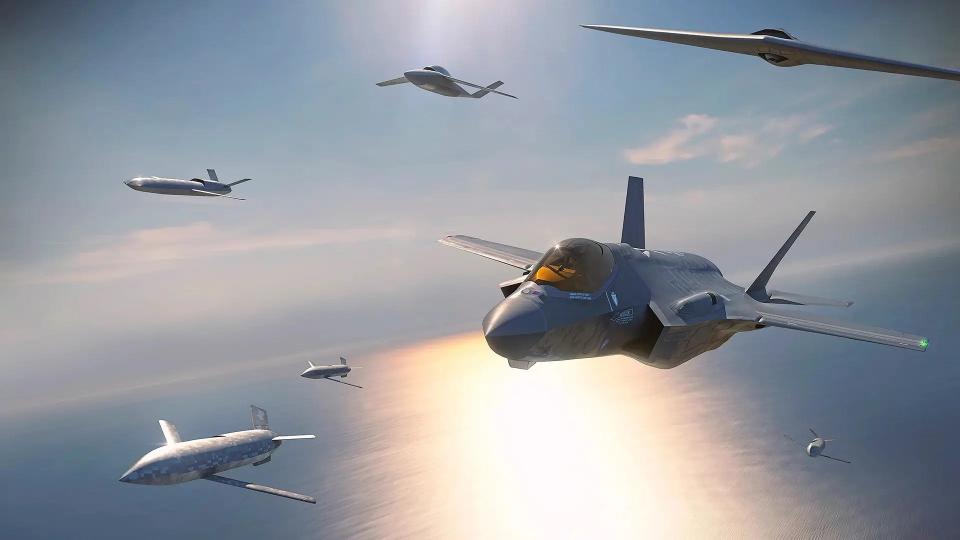
The Air Force is still in the process of refining its CCA requirements, but they will be advanced uncrewed aircraft with high degrees of autonomy. The CCA program is a component of the service's larger Next Generation Air Dominance (NGAD) initiative. NGAD also includes the development of a sixth-generation stealth combat jet, as well as new weapons, sensors, networking and battle management capabilities, advanced jet engines, and more.
https://www.youtube.com/watch?v=_xuVfA6bN3c
Earlier this year, the Air Force announced it was planning around the acquisition of at least 1,000 CCAs, as well as 200 NGAD combat jets. The CCA figure was based around a notional concept of operation envisioning the pairing of two of the drones with each of the NGAD jets, as well as 300 F-35A Joint Strike Fighters.
The Air Force has since said that the size of its future CCA fleet could grow significantly larger and include multiple different designs. However, the service's stated initial focus is on acquiring CCAs that can act as weapons 'trucks,' electronic warfare platforms, and sensor nodes, to augment crewed tactical combat jets.
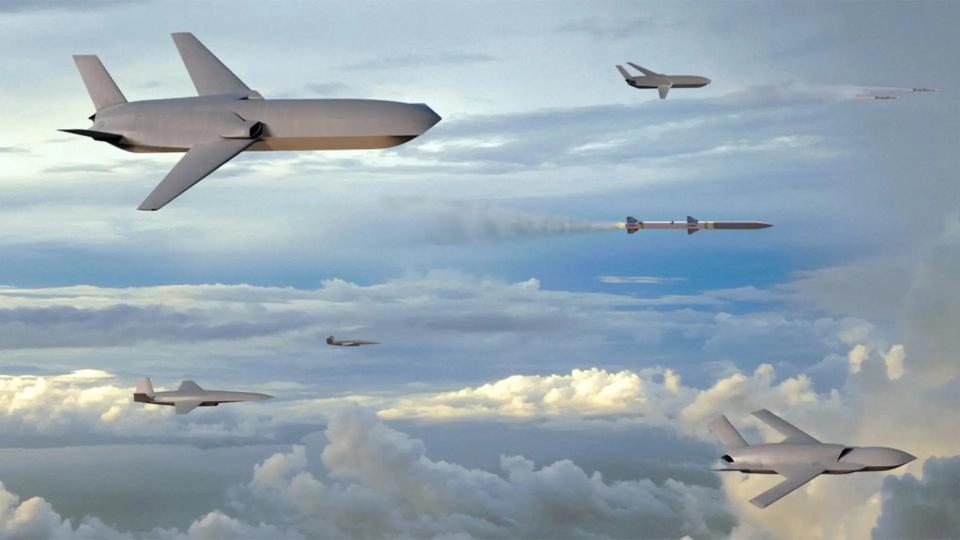
"What is the role, if any, of a CAA in consonance with the B-21 as it's fielded?" Lt. Gen. Slife asked rhetorically while talking today about the Air Force's current plans for these drones. "We should we should keep our options open for how we employ them going forward."
"What is the role of a CCA with our Next Generation Air Refueling System, as that becomes more of a defined program?" was something else Slife brought up. "I think we shouldn't foreclose any of those things."
CCAs, as the Air Force has publicly described them in concept to date, could offer B-21s additional magazine depth and sensor reach, as well as provide support to them in other ways, including acting as communications relays or as defensive 'loyal wingmen.' The drones could provide similar assistance, including serving as escorts, to much more vulnerable tankers and airlifters, a concept the Air Force has already been actively exploring through real-world testing.
However, Slife made clear that what he was talking about today extended beyond just using CCAs to perform the mission sets the Air Force has already outlined for these drones in support of B-21s or tankers, as well as airlifters. He further noted that this was all part of ongoing discussions within the service about how these uncrewed aircraft will be organized into units.
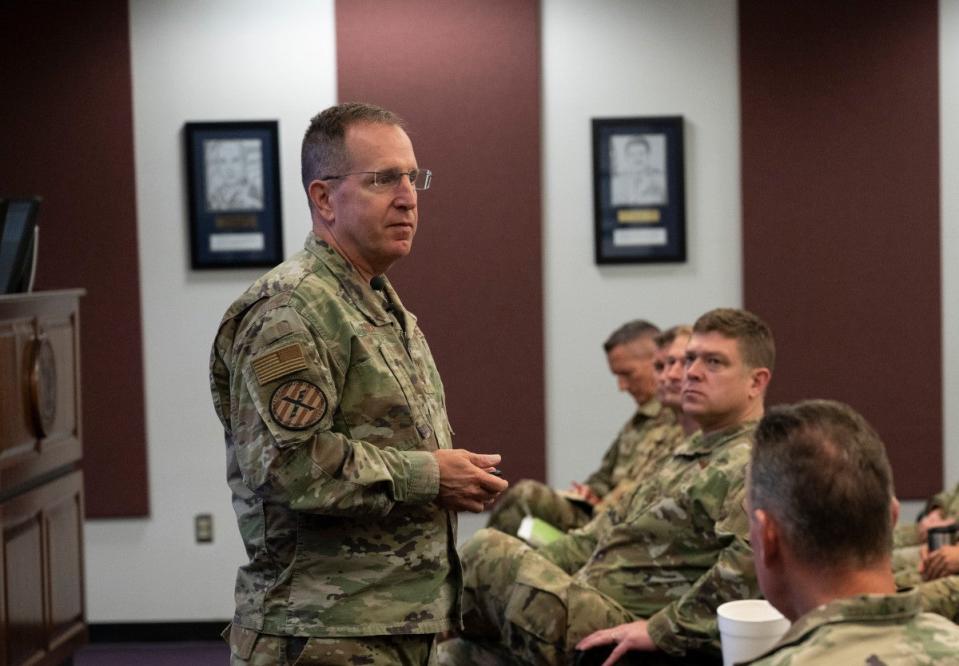
"How we organize them [CCAs] will ultimately affect how we think about their utility and what they... can be done with them," he explained. "At the end of the day, all airplanes are just airplanes... They have different attributes. They have different range, speed, payload, propulsion systems, [and] signatures... We call some of them fighters and we call some of them airlifters and we call some of them tankers, but at the end of the day, they're just airplanes."
"What would we do with CAAs? Might it be able to do resupply in a contested area? It probably will," he continued. "But if you make CCAs organic to our current fighter squadrons, you're probably not going to be thinking about how we use them for resupply. If you make them organic to a C-17 squadron, we're probably not going to think about how they can be used for some of the missions" the Air Force has previously defined.
Slife's specific mention of potentially pairing CCAs with B-21s is interesting given that the Air Force previously looked into developing a more dedicated uncrewed companion for the Raider. Crewed-uncrewed teaming has been a factor in the Raider's development since the establishment of the Long Range Strike-Bomber program that birthed it. A core requirement for the bomber itself is that it be capable of operating in an uncrewed mode itself. But working alongside and controlling uncrewed systems is baked into its DNA.
"The B-21 is multi-functional," Secretary of Defense Lloyd Austin said at the roll-out ceremony for the first pre-production Raider in December 2022. "It can handle anything from gathering intel to battle management."
However, at a roundtable discussion on the sidelines of the 2023 Air and Space Forces Association Warfare Symposium in March, Secretary of the Air Force Frank Kendall disclosed that the service had abandoned the idea of a specific drone to accompany its Raiders on operations because "something with comparable range and meaningful payload that would go with B-21 didn't turn out to look very cost-effective."
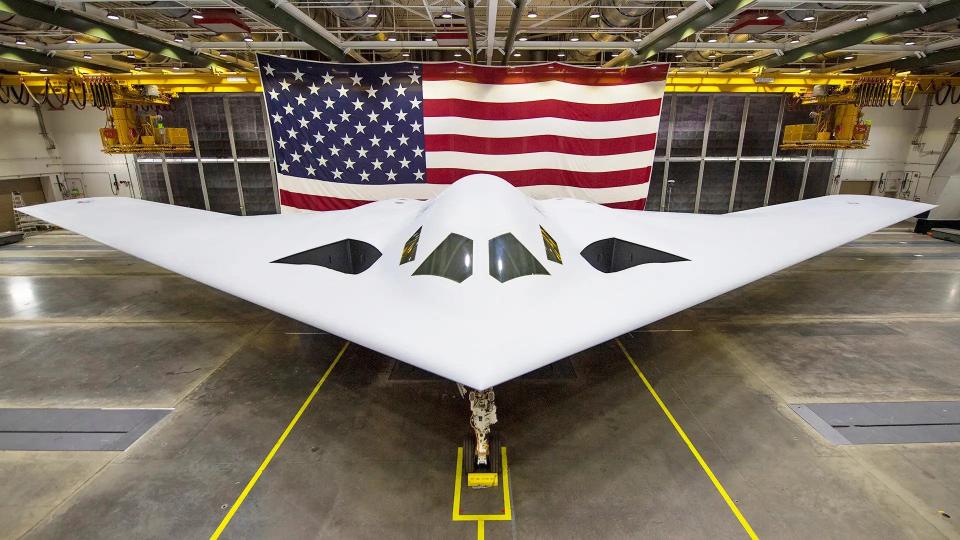
At the time, Kendall downplayed the idea of CCAs operating in closely cooperating with Raiders given the expected gross disparity in their expected range capabilities. Though specific details about the B-21 are highly classified, it is no secret that the plan is for these stealth bombers to be able to fly immense distances without refueling.
"There might be ways in which the CCAs could be coupled with B-21s, although they'd have to be forward based some degree to do that," Kendall noted.
This might not necessarily be as problematic a proposition as one might infer from Kendall's comments, especially when leveraging highly flexible runway-independent designs like Kratos' XQ-58 Valkyrie. Even when conducting very long-range missions, B-21s could conceivably "pick up" forward operating CCAs along their route to and from a target area, or even opportunistically during a mission.
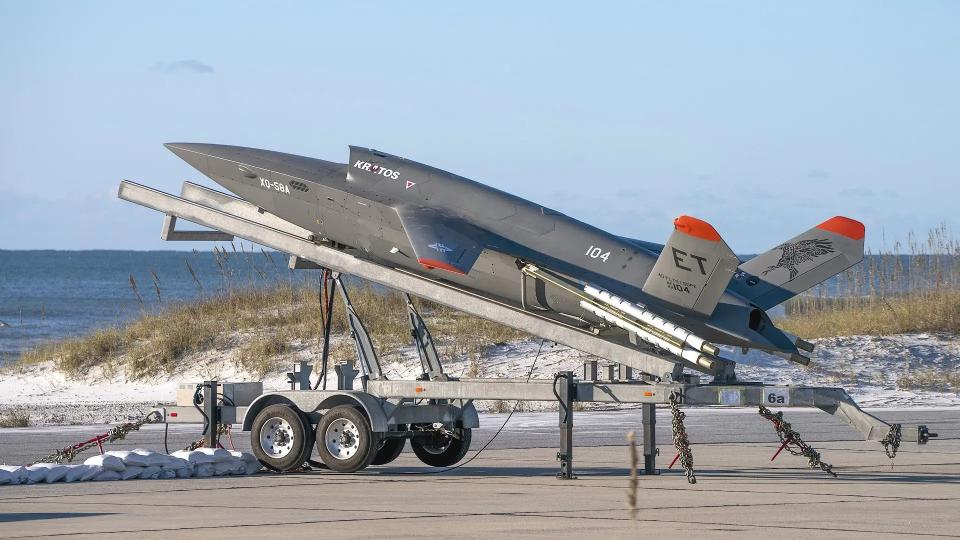
Though they might not have the range capabilities of the B-21, CCAs are generally expected to be able to fly further without refueling compared to crewed fighters. At Defense News' conference today, ACC head Gen. Kelly highlighted this reach as one of the key capabilities these drones will provide.
"If I have a fighter, tethered to a CCA, and vice versa, and I can send that fighter by itself... [hundreds of] miles, or have the option of sending it, you know, 75% of that distance and let CCAs go further and solve some of that range problem, that helps a ton," Kelly explained. "They're helping solve the range problem, and that fighter now can stay on station quite a bit longer, because it's not going to the limits of endurance and distance."
On top of all that, the drones that a B-21 might be working with don't even necessarily have to belong to the Air Force. The Air Force and the U.S. Navy have separate NGAD programs, but are coordinating very closely on those efforts, including with regard to CCAs. The two services expect to be able to seamlessly hand over control of each others' drones back and forth in future operations.
"Making sure we have not just data security and data standards, [but also that] we have waveform standards and waveform security, and we don't beam off and have CCAs that can't talk to, you know, fellow CCAs" will be key in future operations, Gen. Kelly said.
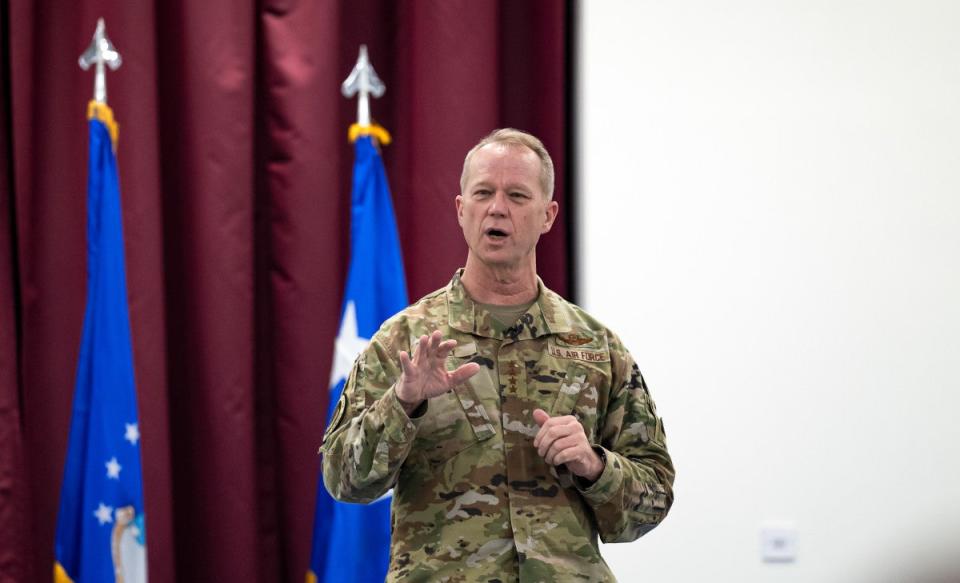
The ideas about CCAs being used to conduct resupply missions in contested environments and possibly acting as a tanker that Slife raised are also things that have come up in the past. The Air Force has described both its Next Generation Air-refueling System (NGAS) and Next-Generation Airlift (NGAL) efforts as 'systems of systems' that could include uncrewed components.
Though unlikely to be designed to carry the same total payloads as traditional tankers or airlifters, drones could still help meet those supporting needs in higher-risk environments. Hub-and-spoke concepts could further enable these operations with conventional platforms bringing loads of fuel and other materiel to forward, but still less vulnerable locations, where drones can then bring them closer to the actual fight.
“Does it have to be manned? Can it be unmanned? Does it have to be 10,000 pounds or 5,000 pounds [payload capacity-wise]?" Air Force Gen. Mike Minihan, head of Air Mobility Command (AMC), told Aviation Week in an interview earlier this year about potential future airlift capabilities. "Can I do vertical lift? Can I do it on an airship [or] a slow-moving low-altitude blimp? There’s a lot of opportunity when it comes to how you approach that.”
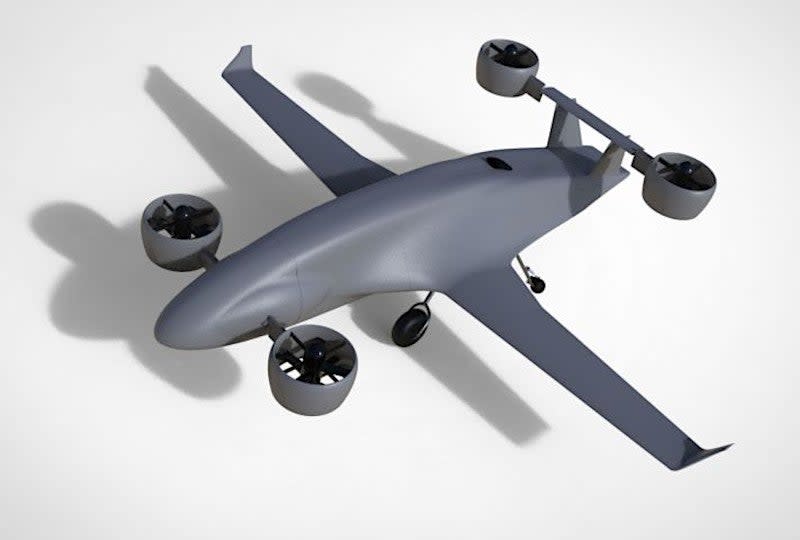
A CCA acting as a cargo aircraft would not automatically need a huge payload capacity to be useful. Even a small cargo pod could still allow one of these drones to bring critical cargoes, including spare parts and medical supplies, to forward locations without risking the crew of a traditional airlifter. The Navy, which has also been testing small drones as a way to get key payloads out to ships at sea, has said in the past that the failure of components weighing 50 pounds or less is often the reason why vessels end up partially mission capable or non-mission capable during routine operations.
For tankers, there is the potential for all of this to be done in mid-air, with crewed types offloading fuel into uncrewed platforms, which then fly off to link up with other aircraft. As part of the rollout of its Fiscal Year 2024 budget proposal earlier this year, the Air Force disclosed that it had completed design work on a podded aerial fueling boom sized to be carried by combat jets, which could also be applicable to future drone tankers. Mid-air refueling via a boom is the Air Force's preferred method.
The Navy is separately in the process of acquiring the MQ-25 Stingray tanker drone, which will use a podded probe-and-drogue aerial refueling system.
https://www.youtube.com/watch?v=GqZOaUpORjo\u0026t=18s
It's also important to note that future CCAs intended work together with B-21s, as well as tankers and airlifters, could be radically different in size and configuration from the ones that the Air Force plans on acquiring initially. It is very possible that they might not be categorized as CCAs in the end, either. The service has already hired General Atomics to build prototypes of a highly modular drone concept called Gambit that includes a common 'chassis' onto which a host of very different bodies can be installed as part of the separate Off-Board Sensing Station (OBSS) program, as you can read more about here.
https://www.youtube.com/watch?v=MhygYE6L6aQ\u0026t=6s
Last year, Lockheed Martin's famous Skunk Works advanced projects division unveiled its own vision for a future crewed-uncrewed teaming ecosystem with multiple tiers of different drones.
https://www.youtube.com/watch?v=fWYY6KHIrK4
The Air Force is still very much in the process of ironing out its requirements just for the initial tranche of CCAs and officials have repeatedly stressed that there will be a need to balance cost and capabilities to be able to acquire the drones in the desired numbers.
"How we think about the organization of CCAs, and whether we want to specialize them for certain types of missions, depending on their attributes or not, I think is really the place that's kind of ripe for experimentation," Slife said today. "I think that those will be some of the interesting questions in the years ahead."
It will certainly be interesting to see how the CCA program, and any adjacent follow-on efforts, evolve. Lt. Gen. Slife has now made clear that there is interest, at least in principle, in significantly expanding the breadth of roles and missions that future drones might perform, including working alongside the B-21 and acting as small tankers or airlifters.
Contact the author: joe@thedrive.com

